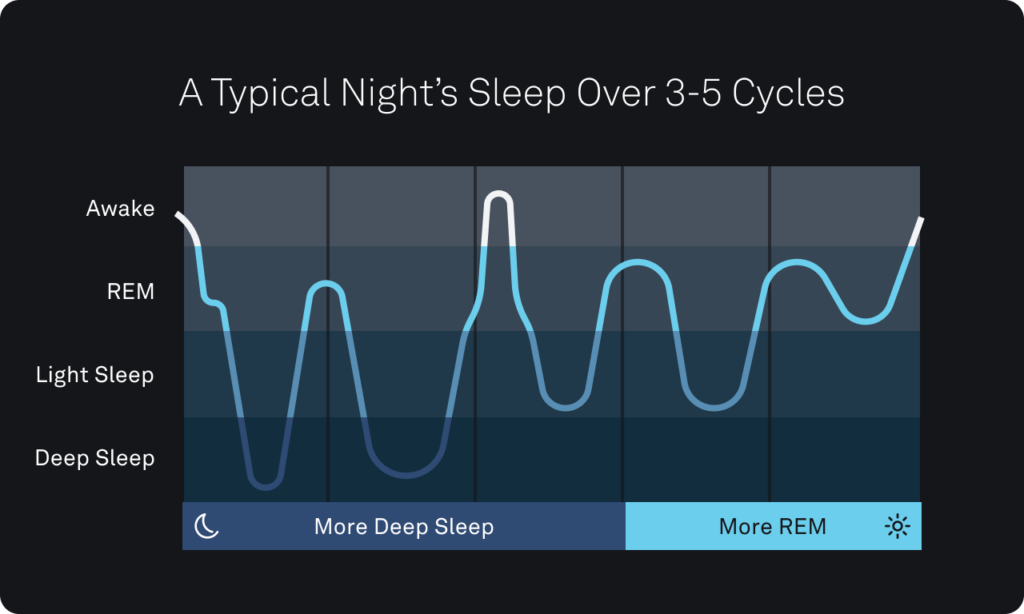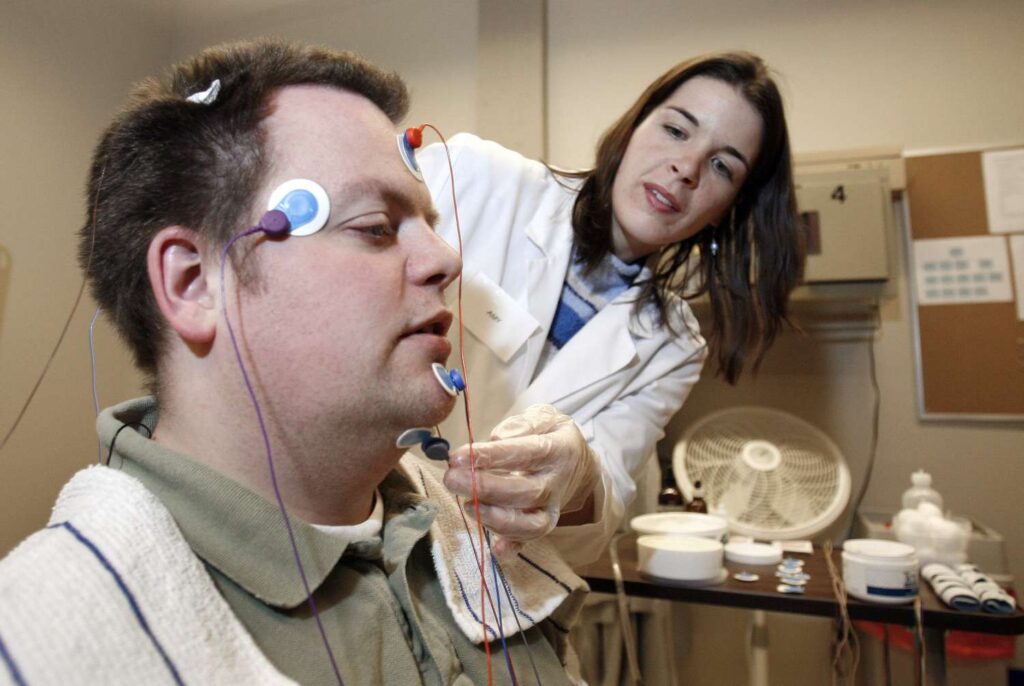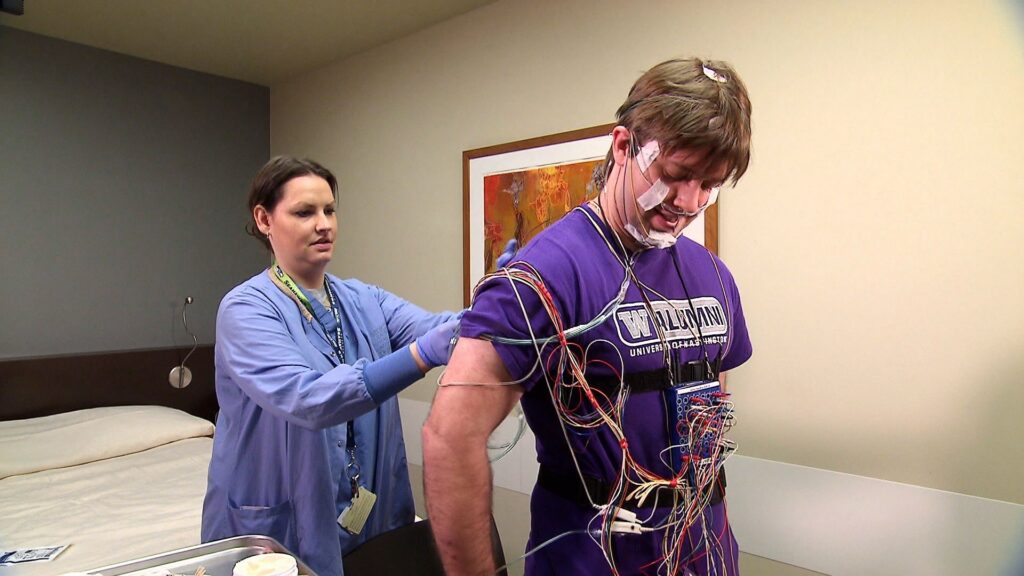Sleep is a fundamental aspect of our overall well-being, and when we experience disruptions in sleep, the impact on our health can be profound. For many, diagnosing sleep-related issues often begins with specialized testing, including sleep studies. Traditional sleep studies are conducted in labs, but as sleep medicine advances, home-based testing has become a practical alternative. One popular choice is the Level 3 sleep study, a convenient option that allows patients to undergo sleep assessments in the comfort of their homes.
In this guide, we’ll explore what a Level 3 sleep study entails, who can benefit from it, and why it’s becoming an essential tool in sleep health.
What Is a Level 3 Sleep Study?
A Level 3 sleep study is a type of sleep test conducted at home, designed to diagnose sleep-related disorders such as obstructive sleep apnea (OSA). Unlike full in-lab sleep studies that monitor multiple bodily functions, a Level 3 study is relatively simplified but still highly effective. It typically monitors essential metrics, including heart rate, oxygen levels, airflow, and respiratory effort, providing valuable insight into sleep patterns and potential issues.
For many patients, the convenience of a Level 3 sleep study makes it an attractive alternative. This home-based test allows people to sleep in their usual environment, reducing the stress or discomfort associated with laboratory-based tests.
Benefits of a Level 3 Sleep Study
1. Convenience and Comfort
One of the most significant advantages of a Level 3 sleep study is its convenience. Unlike traditional in-lab studies, which require a stay at a sleep clinic, the Level 3 study can be done at home, allowing patients to maintain their regular sleep habits. This comfort and familiarity can help yield more accurate results as the test occurs in a natural environment.
2. Lower Cost
In many cases, Level 3 sleep studies are less expensive than in-lab studies, making them accessible to a broader audience. This affordability allows more people to pursue early diagnosis and intervention for sleep disorders without facing high costs.
3. Accurate Screening for Sleep Apnea
A Level 3 sleep study is particularly effective for diagnosing sleep apnea, especially when symptoms such as snoring, pauses in breathing, and excessive daytime drowsiness are present. While it may not provide as comprehensive data as a Level 1 study, it still offers reliable results for identifying moderate to severe sleep apnea.
Who Should Consider a Level 3 Sleep Study?
A Level 3 sleep study may be recommended for those who display symptoms of sleep apnea or other sleep disturbances. Typical symptoms that suggest a need for sleep testing include:
- Loud, chronic snoring
- Waking up gasping for air
- Persistent morning headaches
- Daytime fatigue or difficulty staying awake
- High blood pressure or heart-related issues
If any of these symptoms apply to you, a Level 3 sleep study could provide the answers you need to address potential sleep disorders effectively.

How a Level 3 Sleep Study Works
Pre-Test Preparation
Before undergoing a Level 3 sleep study, you will likely be briefed by your healthcare provider on how to set up the device. Most Level 3 devices are compact and user-friendly, ensuring that setting up the test at home is straightforward.
Equipment and Monitoring
During a Level 3 sleep study, a small device records essential physiological data throughout the night. The device typically includes sensors for tracking heart rate, airflow, oxygen saturation, and respiratory effort. Some models may also have a snoring microphone or body position sensor to capture more detailed information.
Conducting the Study
Once the device is set up, you can go about your usual bedtime routine. The test usually lasts for one night, and in the morning, you’ll return the device to your healthcare provider or mail it back to the lab for analysis. The collected data will then be analyzed by sleep specialists to detect any abnormalities.
SEE ALSO: Top Sleep Disorder Tests to Diagnose and Treat Your Sleep Issues
Understanding Your Level 3 Sleep Study Results
After completing your Level 3 sleep study, a sleep specialist will analyze the recorded data to identify potential sleep disruptions. The report will often include data on:
- Apnea-Hypopnea Index (AHI): This measures the number of times airflow is reduced or stopped per hour, helping to determine the severity of sleep apnea.
- Oxygen Desaturation Index (ODI): This measures drops in blood oxygen levels, often due to obstructed breathing.
- Heart Rate and Respiratory Patterns: These metrics indicate whether any unusual patterns in breathing or heart rate are present, which can be signs of sleep disorders.
If the results show signs of moderate to severe sleep apnea or other issues, further consultation and treatment options can be explored with your healthcare provider.
Treatment Options Following a Level 3 Sleep Study
Once your Level 3 sleep study results are analyzed, and a diagnosis is made, your healthcare provider may recommend various treatment options. Common treatments include:
Continuous Positive Airway Pressure (CPAP) Therapy
CPAP machines are a standard treatment for obstructive sleep apnea. The device delivers continuous airflow through a mask, keeping the airway open and preventing apneas.
Lifestyle Changes
For some individuals, lifestyle changes such as weight loss, dietary adjustments, and quitting smoking can improve sleep apnea symptoms. Regular exercise and avoiding alcohol before bed are also recommended.
Positional Therapy
Some sleep apnea patients benefit from positional therapy, which involves sleeping in specific positions to minimize apnea events. Devices or pillows can help encourage side sleeping, reducing the likelihood of airway obstruction.
Surgery
In severe cases, surgical options may be considered, especially when other treatments are ineffective. Surgical treatments aim to remove tissue obstructions or reposition structures in the airway to improve airflow.

Choosing the Right Sleep Study: Is Level 3 Right for You?
When selecting a sleep study, it’s essential to discuss your symptoms and health history with a healthcare provider. While a Level 3 sleep study is a great diagnostic tool for sleep apnea, those with complex symptoms or co-existing health issues may benefit more from an in-lab study.
When to Opt for an In-Lab Sleep Study
If you have severe symptoms or are dealing with conditions like narcolepsy, insomnia, or restless leg syndrome, a Level 1 sleep study, which provides comprehensive monitoring, may be more appropriate. For most straightforward sleep apnea cases, however, a Level 3 study will likely provide the insights needed for diagnosis.
Advantages and Limitations of a Level 3 Sleep Study
Pros
- Convenience: The ability to test from home adds ease for the patient.
- Cost-Effectiveness: Generally more affordable than in-lab testing.
- Suitable for Diagnosing Sleep Apnea: Effective for moderate to severe cases.
Cons
- Limited Data Collection: Not as detailed as Level 1 studies.
- Not Suitable for All Disorders: Best for specific conditions like sleep apnea, but less helpful for diagnosing other sleep disorders.
Conclusion
Understanding sleep disorders and pursuing the right diagnostic steps can significantly impact health and quality of life. For those with suspected sleep apnea, a Level 3 sleep study is a valuable and practical solution that balances convenience, cost, and effectiveness. While it may not be suitable for diagnosing every type of sleep disorder, it offers a reliable way to assess breathing-related issues and determine if further treatment is needed.
If you’re experiencing symptoms related to sleep apnea or simply want to ensure that your sleep health is optimized, a Level 3 sleep study could be the right step toward better rest and well-being. By working closely with your healthcare provider and exploring options such as CPAP therapy, lifestyle changes, and, in some cases, surgery, you can take control of your sleep health and improve your overall quality of life.

